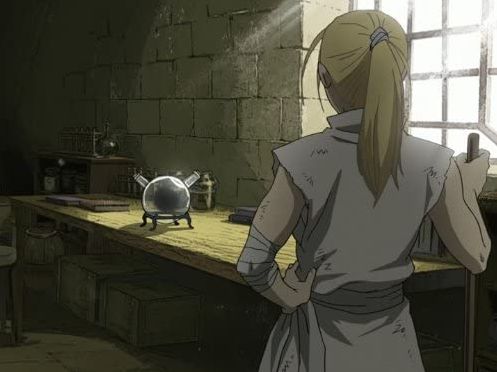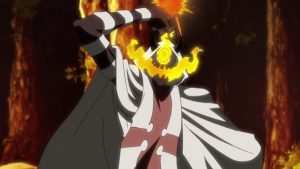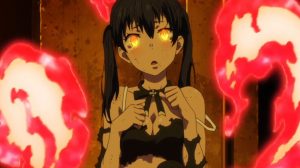
Enen no Shouboutai (Fire Force) is part of an interesting generation of Shounen anime. The exciting series following the dark incidence of human spontaneous combustion has its fair share of great animation, an interesting storyline, and it's brimming with uniqueness; however, in the second season, Fire Force appears to have taken a few small tips from one of the greatest anime of all time: Fullmetal Alchemist. Just how does Fire Force appear to have borrowed from Fullmetal Alchemist? Let’s find out!
Note: “Fullmetal Alchemist” in this article refers to the 2009 series, Fullmetal Alchemist: Brotherhood.
Edgy Protagonist With Traumatic Past Becomes State Dog
One of the first and most striking similarities between Fullmetal Alchemist and Fire Force lies in the character profiles of the protagonists. Edward Elric and Kusakabe Shinra are similar in their trajectories in that they are both traumatised by incidents supposedly caused by their own abilities and become instruments of the state in some capacity.
Edward Elric becomes a State Alchemist as a result of his alchemical abilities, Kusakabe Shinra becomes a firefighter involved in the Special Fire Force 8th Company while trying to investigate the truth about the incident that killed his mother. The Elric siblings use Edward’s State Alchemist status to facilitate their search for the Philosopher’s Stone and their quest to return their bodies to normal. In both cases, the protagonists both possess a certain dissonance about them: Shinra wants to be a hero but has a sharp-toothed grin and red eyes that have earned him the unfortunate nickname of “Devil”; while Edward’s small stature seems to contrast the grandiosity of his alias, “Fullmetal”.
Age-old National Conspiracy
As far as the storyline goes, Fire Force seems to have definitely taken a page out of the Fullmetal Alchemist book of rhymes. The developing conspiracy of the Religion of Sol, the identity of the Evangelist, the incidence of spontaneous human combustion, as well as the truth behind the perpetual energy generator Amaterasu being powered by a Pyrokinetic are all elements reminiscent of the 400-year conspiracy hatched by Fullmetal Alchemist primary antagonist, Father, assisted by his homunculi children.
In Father’s plan, the state of Amestris was founded following his ruin of the nation of Xerxes, all with the intention of repeating his nationwide transmutation circle plan to make himself into a transcendent being; a god. In both series, the main characters deal with the shock of finding out the betrayal of higher-ranked officers in their respective organisations, with the season 1 betrayal of Rekka Hoshimiya being similar to the revelation that King Bradley is a homunculus.
Evil Begets Evil
In Fullmetal Alchemist, the nationwide transmutation circle required the sacrifice of 5 individuals who had seen “The Truth”. These individuals were both Elric brothers, their mentor Izumi Curtis and Van Hohenheim, with the last one being Roy Mustang, who had been forced to see “The Truth” in order to make him an eligible candidate. The turning of Roy Mustang into a suitable sacrifice is comparable to the Fire Force antagonists, the White-clad, using special insects to either turn individuals into Infernals or into Pyrokinetics in a horrific game of chance; one where regardless of the result, evil begets evil.

Mysterious Otherworldly Antagonist
Fullmetal Alchemist builds a steady list of enemies that the Elric brothers have to fight or befriend prior to their meeting of the true antagonist, The Dwarf in the Flask, also known as Father. Father’s origins are steeped in mystery; however, his initial form in the story is that of a mysterious black lifeform - a homunculus, trapped in a flask.
After manipulating Slave no. 23 into assisting him with a grand and evil plan, The Dwarf in the Flask orchestrates the creation of two identical Philosopher’s Stones - himself, now in a cloned body of his friend turned foe, Slave no. 23, better known as Van Hohenheim. As Philosopher’s Stones, Van Hohenheim and Father were capable of miraculous feats of alchemy which earned them the reputation of being the progenitors of alchemy in the East and the West respectively.
When it comes to Fire Force, the Evangelist is a mysterious figure of the Religion of Sol; however, as season 2 has progressed, the identity of the Evangelist has slowly been revealed and, much like Father and Van Hohenheim, the Evangelist is someone with incredible, literally otherworldly powers; however, like father, the Evangelist has been using the empire as the ground for an intricate plan.

Final Thoughts
Fire Force is shaping up to be a solid Shounen title, steadily improving in the second season as the stakes get higher and the fires burn hotter and brighter! While this was an exercise in establishing Fire Force as one of many inspired by Arakawa Hiromu’s classic, Fire Force has developed its own pace, aesthetic, unique attributes, and characters that enable it to stand out the way it does!
What are your thoughts on Fire Force and its possible sources of inspiration? Drop a comment below and tell us everything you think!
Recommended Post




